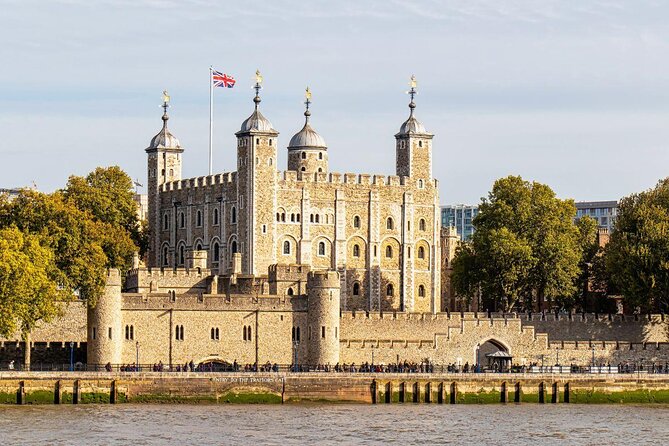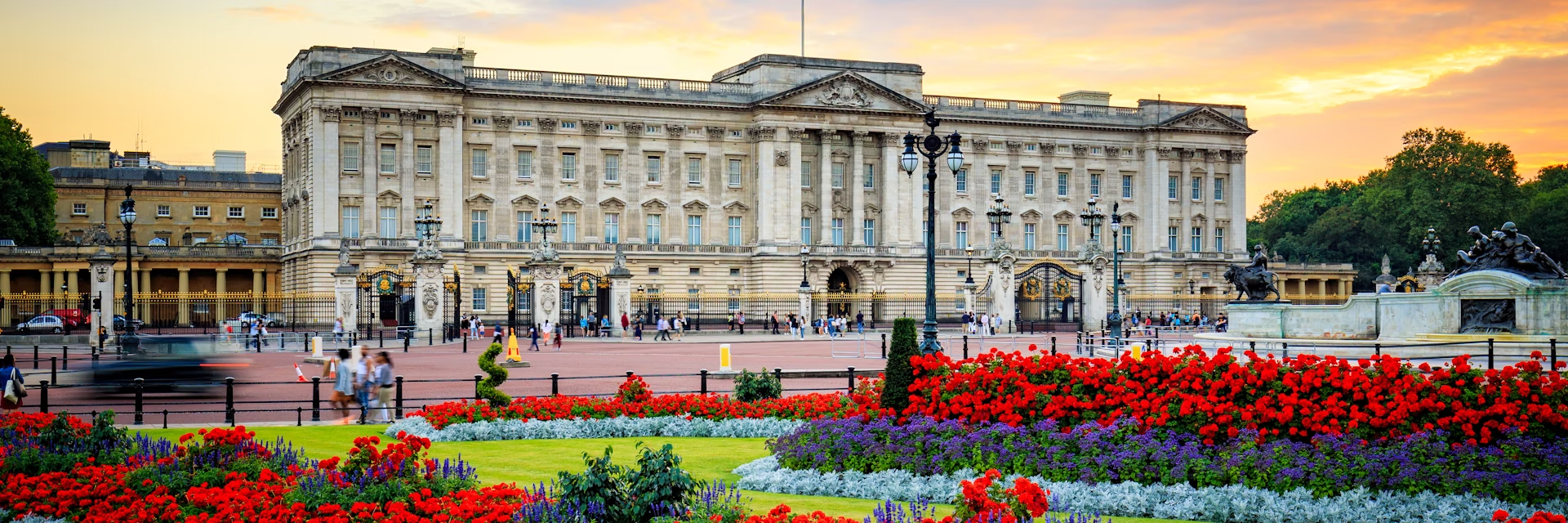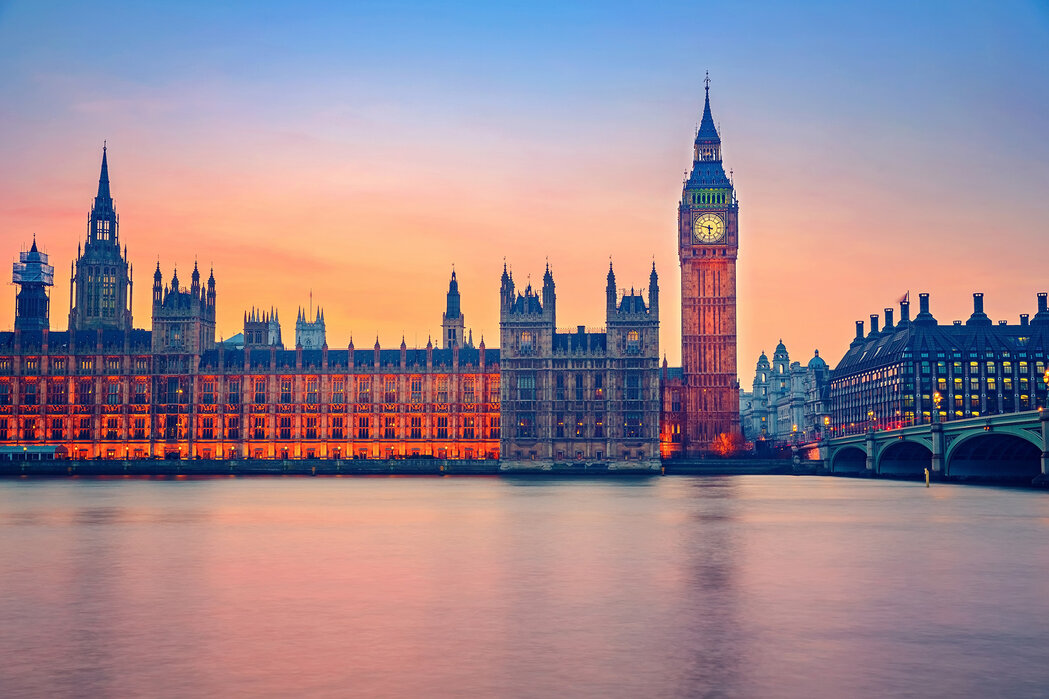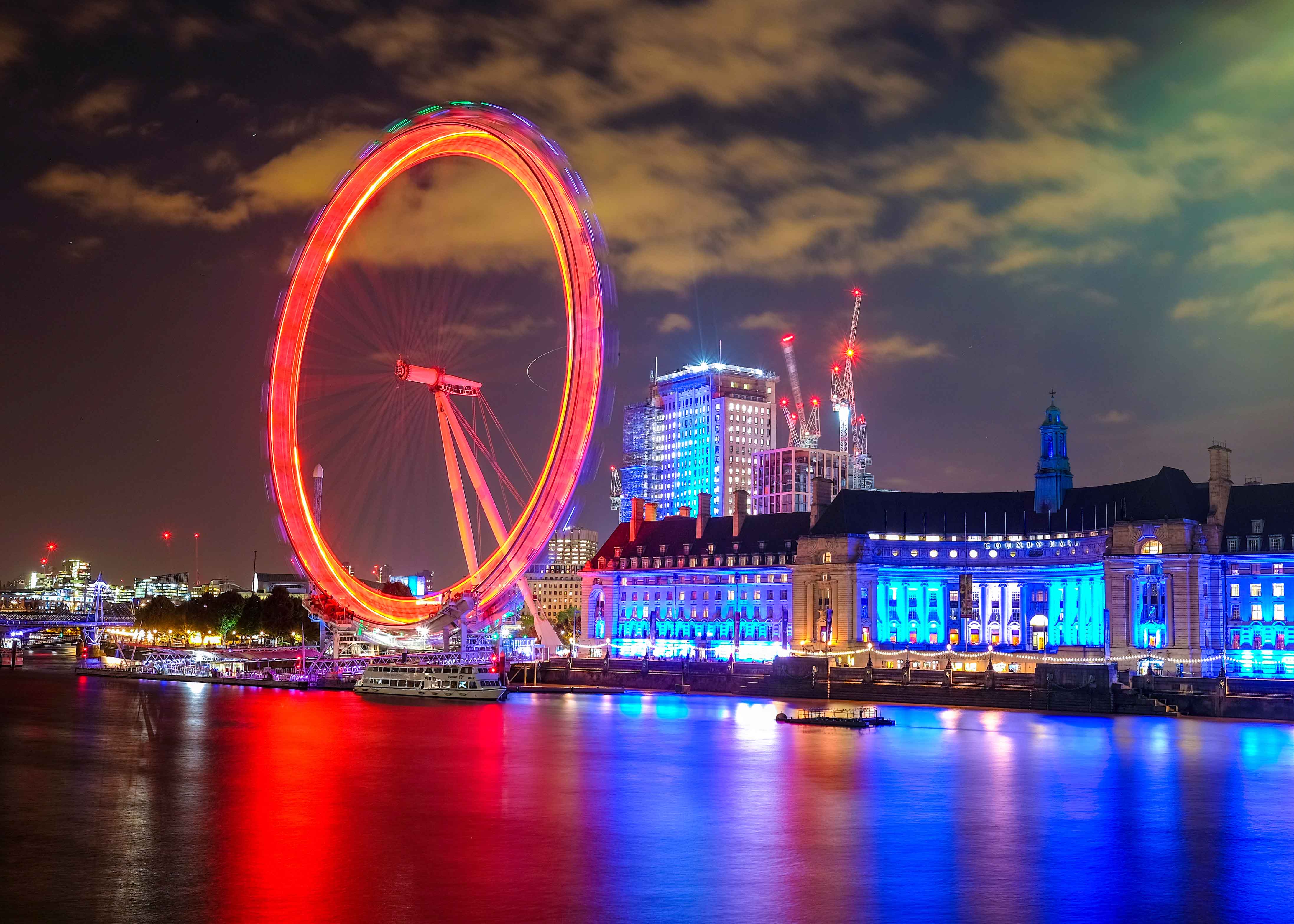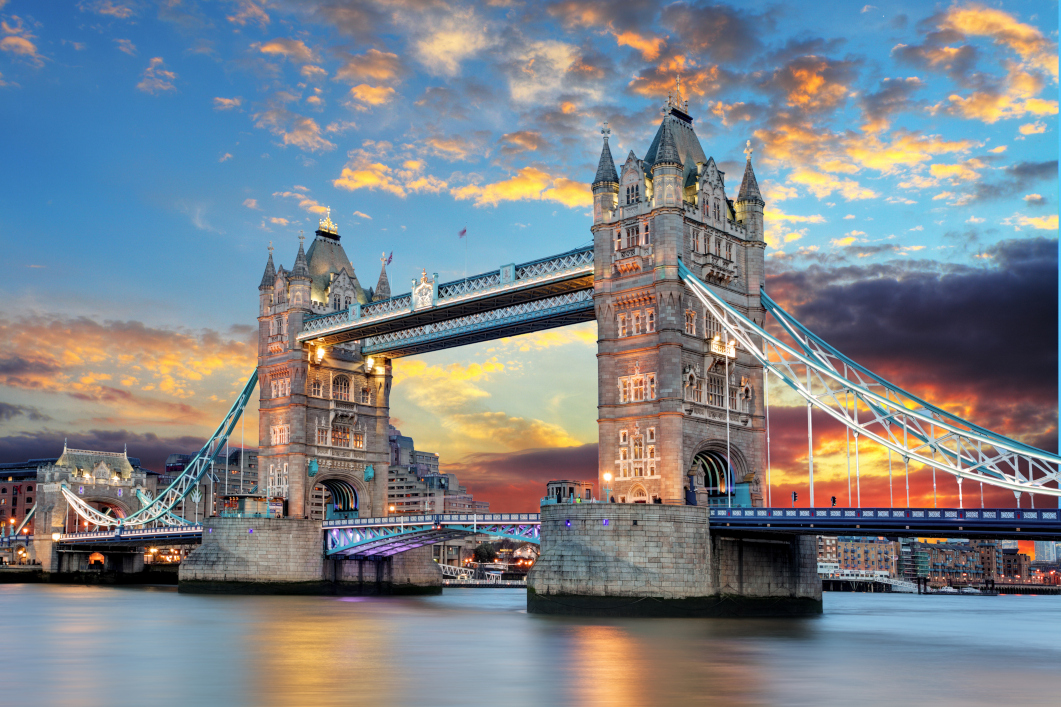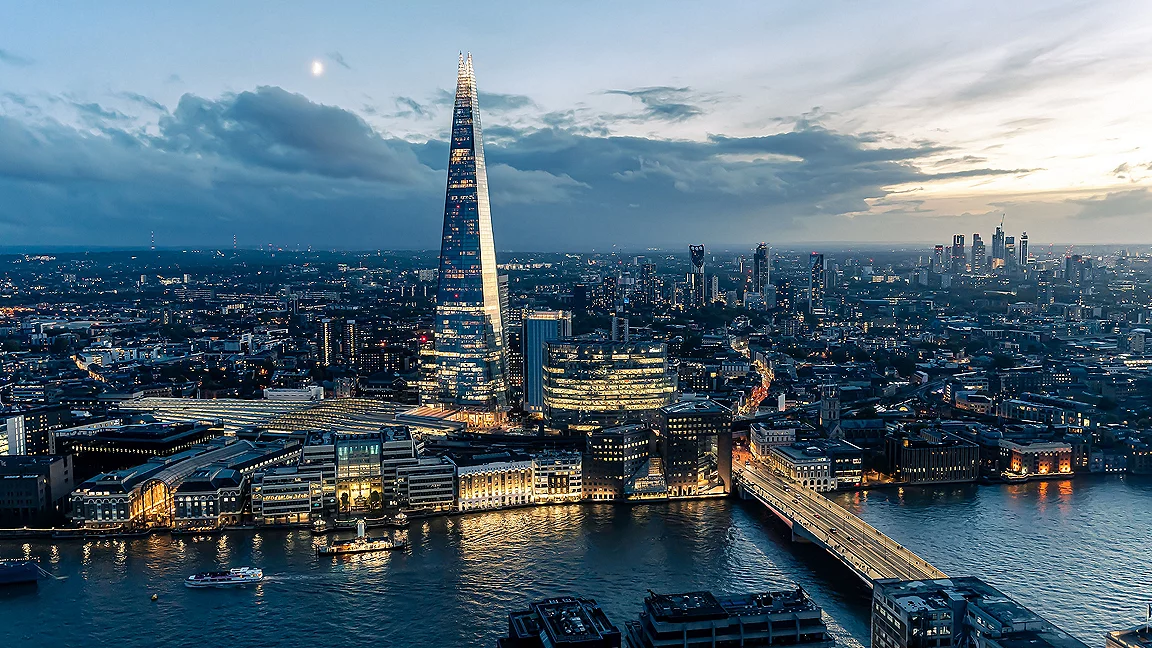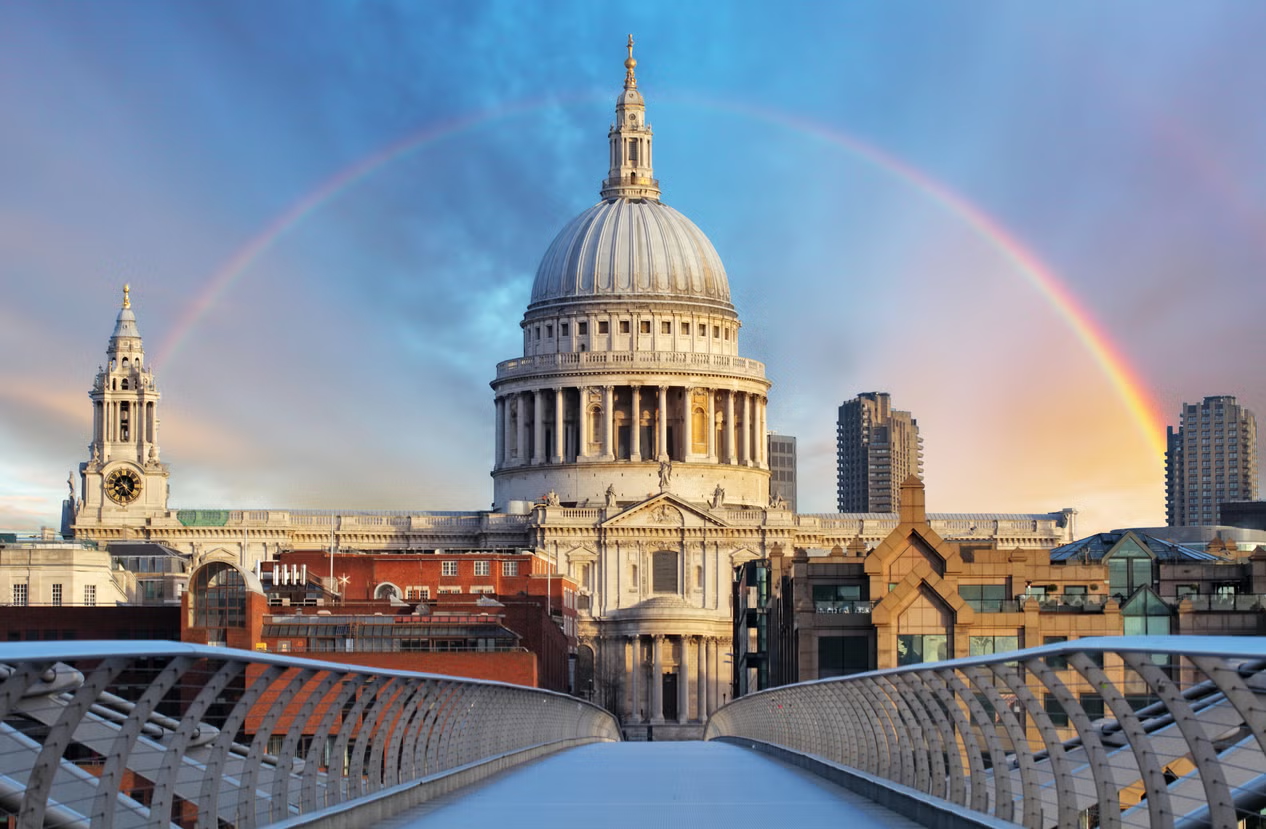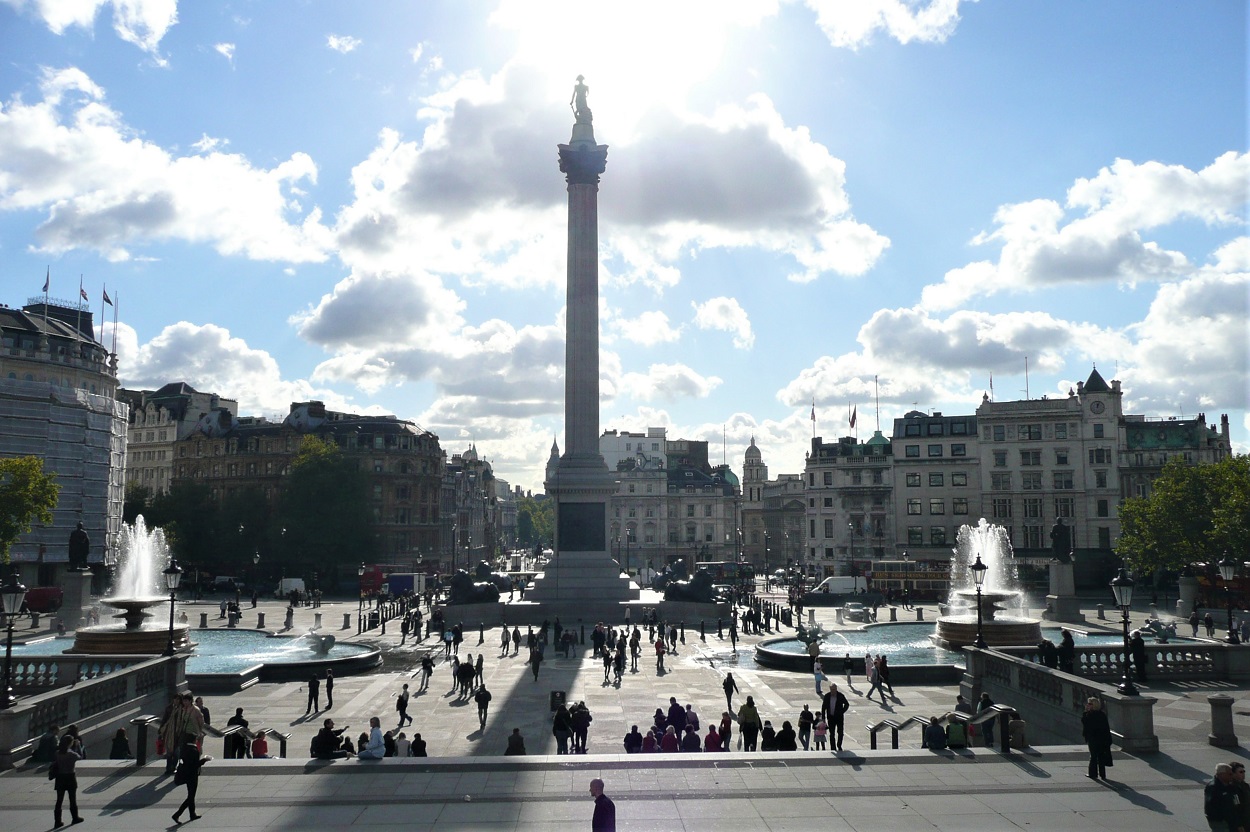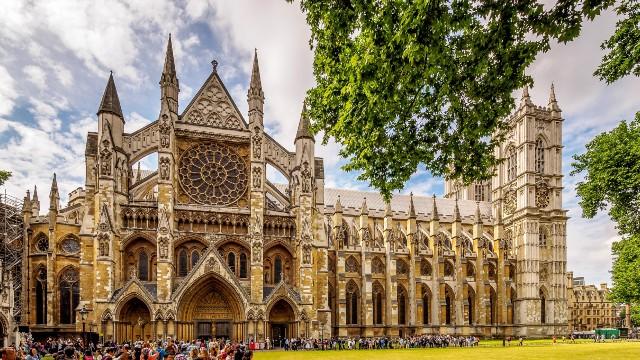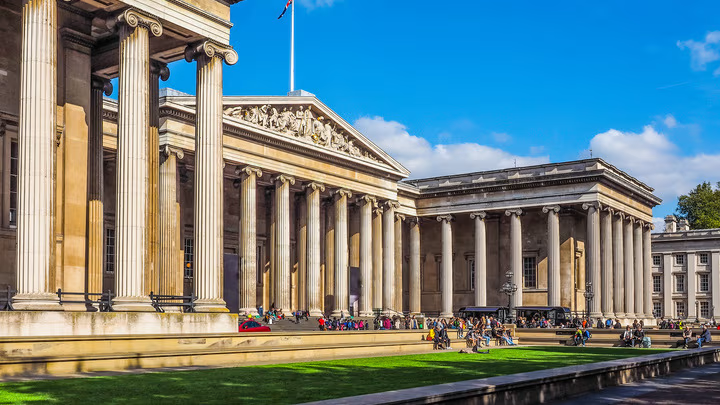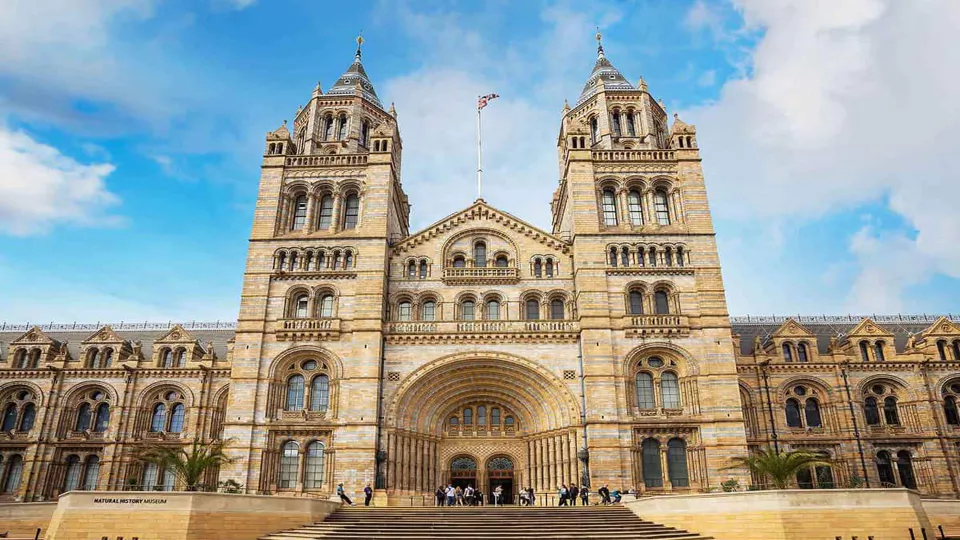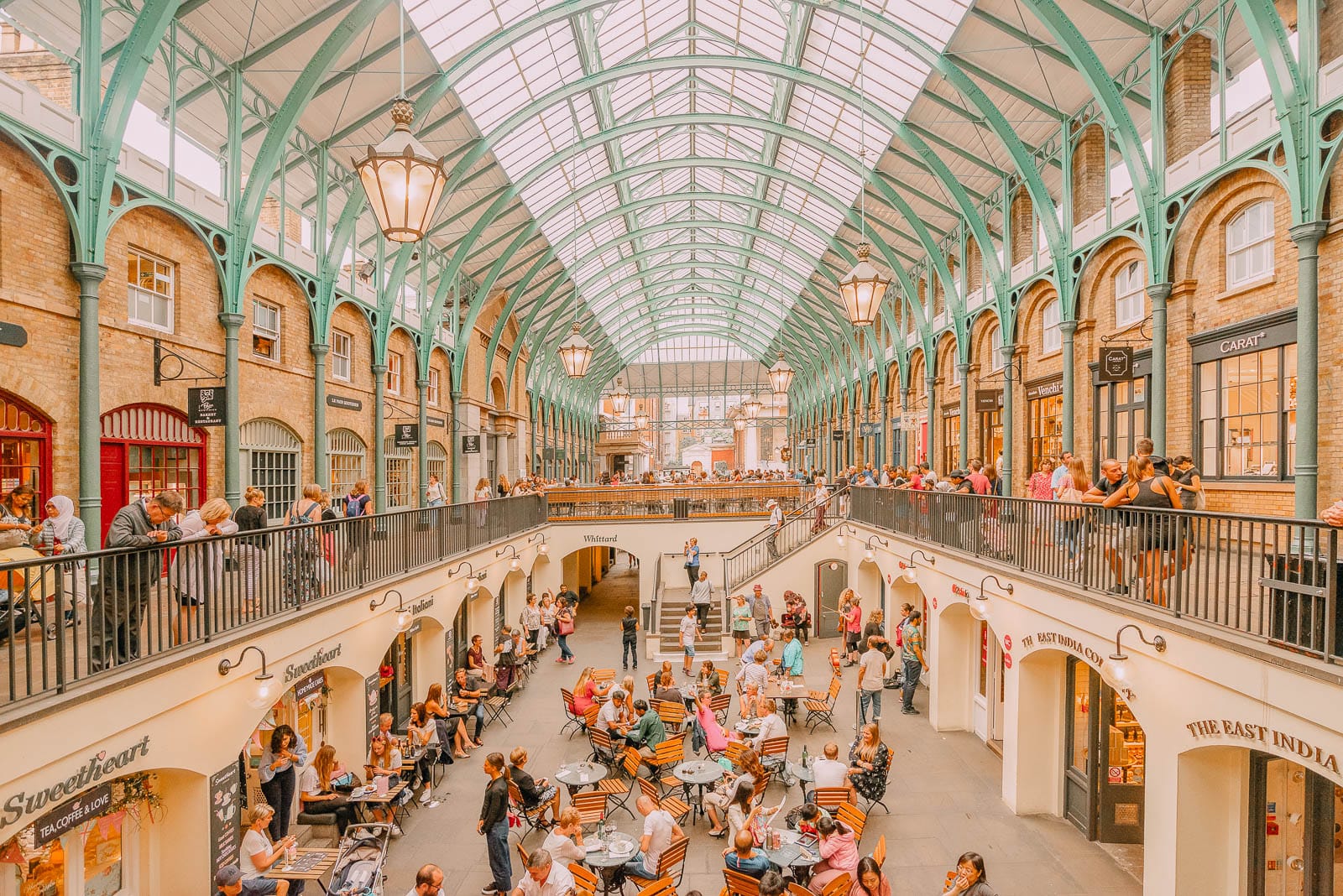Discover Famous Landmarks In London [Top Tips For Visitors]
London is a city steeped in history, and its famous landmarks tell the story of its past. From iconic structures to hidden gems, let’s explore what makes these sites so special.
Jan 16, 202534.2K Shares561.3K Views
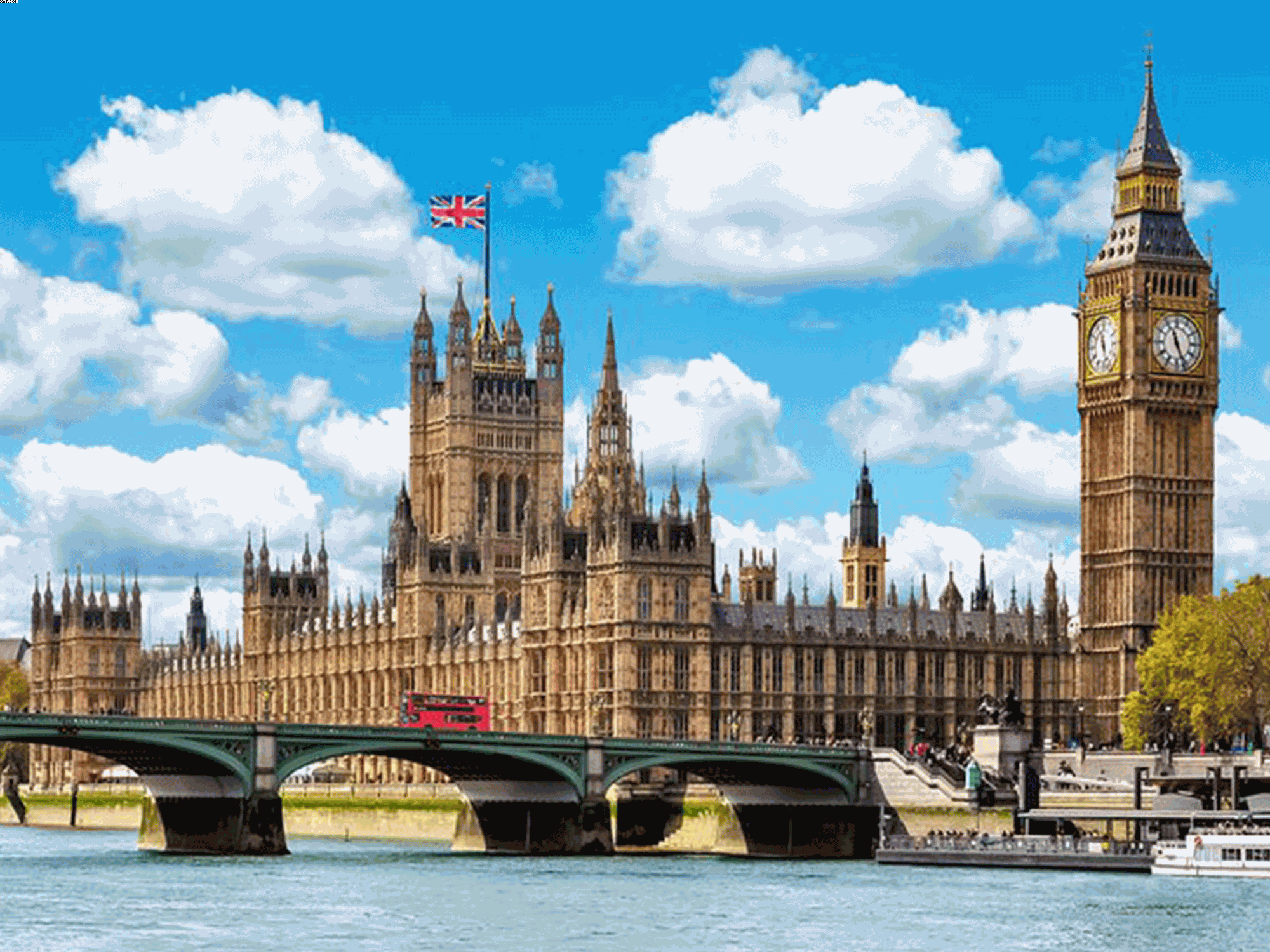
London, a city steeped in history and brimming with culture, is home to some of the most iconic landmarks in the world. These landmarks not only define the city’s skyline but also tell the story of its rich past and vibrant present.
Whether you're a first-time visitor or a seasoned traveler, exploring London’s famous landmarks is a journey through time, showcasing the grandeur of the British monarchy, the ingenuity of its architects, and the resilience of its people.
The Tower Of London
The Tower of Londonis one of the most iconic and historically significant landmarks in the city. Founded by William the Conqueror in 1066, this imposing fortress has served multiple purposes over the centuries, including as a royal palace, a prison, and even a zoo. Today, it is best known as the home of the Crown Jewels and as a symbol of the enduring power of the British monarchy.
What To See:
- The Crown Jewels: The Crown Jewels are a dazzling collection of regalia, including crowns, scepters, and other ceremonial objects used in royal ceremonies. The Imperial State Crown, worn by the monarch during the State Opening of Parliament, is one of the highlights.
- The White Tower: The oldest part of the Tower, the White Tower, is a stunning example of Norman architecture. It houses the Royal Armouries, where you can see a fascinating collection of arms and armor, including the famous suits of armor worn by King Henry VIII.
- The Yeoman Warders: Commonly known as Beefeaters, these guards not only protect the Tower but also serve as knowledgeable guides. Join one of their tours to hear captivating stories of the Tower’s dark history, including tales of imprisonment, execution, and intrigue.
Visitor Tips:
- Timing: Arrive early to avoid the crowds, especially during the summer months when the Tower is busiest.
- Ceremony of the Keys: Consider booking tickets for the Ceremony of the Keys, a 700-year-old tradition of locking up the Tower each night—a unique experience that offers a glimpse into the Tower’s history.
Buckingham Palace
Buckingham Palace is synonymous with the British monarchy and serves as the official London residence of the sovereign. This grand palace has been the setting for many state occasions and royal ceremonies, making it one of the most significant buildings in the United Kingdom.
What To See:
- The State Rooms: During the summer months, the State Rooms of Buckingham Palace are open to the public. Visitors can explore the opulent rooms where the Queen hosts her guests, including the Throne Room, the Picture Gallery, and the Grand Staircase.
- The Changing of the Guard: This quintessential British tradition takes place outside the palace and is a must-see for any visitor. The ceremony involves a new guard exchanging duty with the old guard, accompanied by a military band playing traditional music.
- The Royal Mews: The Royal Mews, located adjacent to Buckingham Palace, houses the state vehicles, including the royal carriages and the Gold State Coach, which is used for coronations and other significant events.
Visitor Tips:
- Best Time to Visit: The State Rooms are only open from late July to September, so plan your visit during these months to get an inside look at the palace.
- Changing of the Guard: Arrive early to secure a good viewing spot, especially during the summer when crowds can be large.
Big Ben And The Houses Of Parliament
Big Ben and the Houses of Parliament are among London’s most recognizable landmarks. The clock tower, officially named the Elizabeth Tower, is often mistakenly called Big Ben, which is the name of the Great Bell housed within the tower. Together, these structures symbolize the heart of British democracy.
What To See:
- The Elizabeth Tower: Standing at 96 meters tall, the Elizabeth Tower is a marvel of Gothic Revival architecture. While the tower is not currently open to the public, the exterior is stunning, especially when viewed from across the River Thames.
- The Houses of Parliament: Also known as the Palace of Westminster, the Houses of Parliament are the seat of the UK Parliament. Visitors can take guided tours of the historic building, which includes the House of Commons, the House of Lords, and Westminster Hall, the oldest part of the palace.
- Westminster Hall: This grand hall has witnessed many significant historical events, including the trials of Guy Fawkes and King Charles I. Its impressive medieval timber roof is one of the greatest in Europe.
Visitor Tips:
- Touring: Guided tours are available on Saturdays and during parliamentary recesses. Booking in advance is highly recommended, as tours are popular and spaces fill up quickly.
- Photography: The best time to photograph Big Ben and the Houses of Parliament is early in the morning or late in the evening, when the light is softer, and the crowds are thinner.
The London Eye
The London Eye, often referred to as the Millennium Wheel, is one of the world’s tallest observation wheels and has become a modern symbol of London since its opening in 2000. Located on the South Bankof the River Thames, it offers unparalleled views of the city’s skyline.
What To See:
- Panoramic Views: From the top of the London Eye, at 135 meters, you can see many of London’s most famous landmarks, including St. Paul’s Cathedral, Buckingham Palace, and the Tower of London. Each rotation takes about 30 minutes, giving you plenty of time to take in the sights.
- The 4D Experience: Before boarding the London Eye, visitors can enjoy a short 4D film that brings the experience to life with aerial footage of London and special effects.
- Thames River Cruise: Enhance your visit by combining a ride on the London Eye with a cruise along the River Thames, offering a different perspective of London’s landmarks.
Visitor Tips:
- Best Time to Visit: For the best views, visit the London Eye at sunset or after dark when the city is illuminated.
- Tickets: Book your tickets online in advance to avoid long queues and to save money. Consider upgrading to a fast-track ticket for priority boarding.
Tower Bridge
Tower Bridge, often mistaken for London Bridge, is one of London’s most photographed landmarks. This Victorian bascule bridge, with its iconic twin towers, is both an architectural marvel and a vital part of the city’s infrastructure, allowing ships to pass through by raising its roadways.
What To See:
- The Tower Bridge Exhibition: The exhibition takes you inside the bridge, where you can learn about its history, construction, and the engineering marvels that make it work. The Victorian engine rooms, which once powered the bridge’s lifts, are a highlight of the tour.
- Glass Walkway: One of the most thrilling parts of the Tower Bridge experience is walking on the glass floor that spans the bridge’s upper walkways, offering a unique view of the bridge and the River Thames below.
- Bridge Lifts: Timing your visit to see the bridge’s bascules being raised to allow ships to pass through is a memorable experience. Check the Tower Bridge website for the schedule of bridge lifts.
Visitor Tips:
- Photography: For the best photos, visit Tower Bridge at night when it is beautifully lit. The bridge’s reflection in the Thames provides a stunning backdrop for pictures.
- Timing: Try to schedule your visit during a bridge lift for a truly unique experience. The lifts are scheduled throughout the day, but they are more frequent in the summer months.
The Shard
The Shard, standing at 310 meters, is the tallest building in the United Kingdom and has quickly become a modern icon in London’s skyline. Designed by architect Renzo Piano, The Shard offers not only breathtaking views but also luxurious dining and accommodation experiences.
What To See:
- The View from The Shard: Located on the 69th and 72nd floors, the viewing platforms offer 360-degree views of London that stretch for up to 40 miles on a clear day. Interactive telescopes provide detailed information about the landmarks you can see.
- Restaurants and Bars: The Shard is home to some of London’s finest dining establishments, including Aqua Shard, which serves contemporary British cuisine with stunning views, and Hutong, known for its Northern Chinese dishes and panoramic vistas.
- Luxury Stays: For those seeking an unforgettable experience, a stay at the Shangri-La Hotel, located within The Shard, offers luxury with a view. Each room boasts floor-to-ceiling windows, ensuring that you wake up to spectacular views of the city.
Visitor Tips:
- Booking: Tickets for The View from The Shard can be more affordable when booked in advance online. Visiting during off-peak hours can also provide a more serene experience.
- Dining: Reservations for the restaurants within The Shard are highly recommended, especially for dinner, as they are popular with both locals and tourists.
St. Paul’s Cathedral
St. Paul’s Cathedral, with its magnificent dome, is one of London’s most iconic buildings. Designed by Sir Christopher Wren and completed in the early 18th century, the cathedral has been the site of many important events, including the wedding of Prince Charles and Lady Diana Spencer.
What To See:
- The Dome: The dome of St. Paul’s Cathedral is one of the largest in the world. Visitors can climb 528 steps to the top for a stunning panoramic view of London. Along the way, stop at the Whispering Gallery, where whispers can be heard clearly across the other side of the dome.
- The Crypt: The crypt is the final resting place of some of Britain’s greatest heroes, including Admiral Lord Nelson, the Duke of Wellington, and Sir Christopher Wren himself.
- The Nave: The interior of the cathedral is equally impressive, with its intricate mosaics, stunning stained glass, and the Great Organ, one of the largest in the UK.
Visitor Tips:
- Photography: Photography is not allowed inside the cathedral, so take your time to appreciate the beauty of the space.
- Services: Consider attending a service or an Evensong to experience the cathedral’s incredible acoustics and atmosphere.
Trafalgar Square
Trafalgar Square is one of London’s most vibrant public spaces, located in the heart of the city. The square commemorates the Battle of Trafalgar, a British naval victory in the Napoleonic Wars, and is a popular gathering place for both locals and tourists.
What To See:
- Nelson’s Column: At the center of Trafalgar Square stands Nelson’s Column, a 52-meter-high monument topped with a statue of Admiral Horatio Nelson, who died at the Battle of Trafalgar.
- The National Gallery: On the northern side of the square, the National Gallery houses one of the world’s greatest collections of Western European paintings. Highlights include works by Van Gogh, Da Vinci, and Turner.
- The Fourth Plinth: Originally intended to hold a statue, the Fourth Plinth now hosts a rotating series of contemporary art installations, making each visit to Trafalgar Square a unique experience.
Visitor Tips:
- Events: Trafalgar Square is often the site of public celebrations, protests, and events, so check the calendar to see what’s happening during your visit.
- Relaxation: The square’s fountains and steps offer a great place to relax and people-watch, especially on a sunny day.
Westminster Abbey
Westminster Abbeyis one of the most important religious buildings in the United Kingdom. This Gothic masterpiece has been the site of every English and British coronation since 1066 and is the final resting place of many monarchs and notable figures.
What To See:
- Poet’s Corner: Located in the South Transept, Poet’s Corner is the burial place of some of Britain’s most famous poets and writers, including Geoffrey Chaucer, Charles Dickens, and Rudyard Kipling.
- The Coronation Chair: The chair, which has been used in every coronation since 1308, is housed in St. George’s Chapel. The Stone of Scone, upon which Scottish kings were traditionally crowned, is also part of the display.
- The Tomb of the Unknown Warrior: This simple, yet poignant, tomb honors the unknown soldiers who died in World War I and represents all those who have given their lives in conflict.
Visitor Tips:
- Timing: Westminster Abbey can get very busy, so it’s best to arrive early in the morning or later in the afternoon.
- Audio Guide: Make use of the free audio guide to gain deeper insights into the history and significance of the Abbey.
The British Museum
The British Museum is one of the world’s greatest museums, housing an extraordinary collection of art and antiquities from around the globe. With over eight million objects, the museum offers a journey through human history, from prehistoric times to the present day.
What To See:
- The Rosetta Stone: The Rosetta Stone is one of the most famous objects in the British Museum. This ancient Egyptian artifact was the key to deciphering Egyptian hieroglyphs, unlocking the secrets of the civilization’s written language.
- The Elgin Marbles: These stunning sculptures once adorned the Parthenon in Athens and are now housed in the museum’s Duveen Gallery.
- The Egyptian Mummies: The museum’s Egyptian collection is one of the largest in the world, with a fascinating display of mummies and burial artifacts that offer a glimpse into the ancient Egyptian belief in the afterlife.
Visitor Tips:
- Admission: The British Museum is free to enter, though donations are appreciated. Special exhibitions may require a ticket, which is best booked in advance.
- Navigation: The museum is vast, so pick up a map at the entrance and prioritize the exhibits you most want to see.
The Natural History Museum
The Natural History Museum is a treasure trove of natural wonders, from dinosaur skeletons to precious gems. Housed in a stunning Victorian building in South Kensington, the museum is both an architectural masterpiece and a world-class institution of science and education.
What To See:
- Dippy the Dinosaur: Although the iconic Diplodocus skeleton, known as Dippy, has been replaced by a Blue Whale skeleton in the central hall, it remains one of the museum’s most beloved exhibits and can still be seen on special tours and exhibitions.
- The Blue Whale Skeleton: The Blue Whale skeleton, named Hope, now takes center stage in the museum’s Hintze Hall, symbolizing the importance of conservation.
- The Earth Hall: Journey through time and space as you explore the Earth Hall, which includes a giant rotating globe and fascinating exhibits on volcanoes, earthquakes, and the forces that shape our planet.
Visitor Tips:
- Interactive Exhibits: Many exhibits are interactive, making the museum a hit with both children and adults. Be sure to check out the hands-on activities in the Investigate Centre.
- Best Time to Visit: The museum can get very busy, especially on weekends and during school holidays. Visiting early in the morning or late in the afternoon can help you avoid the crowds.
Covent Garden
Covent Gardenis not just a famous landmark but also one of London’s most vibrant neighborhoods. Known for its lively atmosphere, historic market, and street performances, Covent Garden offers a perfect blend of culture, shopping, and entertainment.
What To See:
- Street Performances: Covent Garden is famous for its street performers, who entertain crowds with everything from acrobatics and magic tricks to opera singing. The performances take place daily in the central piazza and are free to watch, though donations are appreciated.
- The Market: The historic market hall is home to a variety of shops and stalls selling everything from handmade crafts to gourmet food. Don’t miss the Apple Market, which specializes in British-made arts and crafts.
- The Royal Opera House: Located just off the main piazza, the Royal Opera House is one of the world’s leading opera and ballet venues. If you can’t catch a performance, consider taking a backstage tour to learn about the history and workings of this iconic institution.
Visitor Tips:
- Shopping and Dining: Covent Garden is a great place to shop for unique souvenirs and enjoy a meal at one of its many cafes and restaurants. The area is particularly lively in the evenings, so it’s a good spot for dinner or drinks.
- Best Times: The area is busy throughout the day, but visiting in the morning or late afternoon can offer a slightly less crowded experience.
You Might Like: Top 20 Romantic Places To Visit In London In 2024
FAQs About Famous Landmarks In London
How Can I Best Explore London’s Landmarks In A Short Visit?
If you're short on time, consider taking a hop-on, hop-off bus tour that covers most of London’s major landmarks. Alternatively, focusing on a specific area, such as Westminster, allows you to visit several landmarks in close proximity.
Are There Any Free Landmarks In London Worth Visiting?
Yes, many of London’s famous landmarks are free to visit, including the British Museum, the National Gallery, Trafalgar Square, and Covent Garden. While some attractions charge admission, many offer free access to certain areas or have free entry on specific days.
What’s The Best Time Of Year To Visit London’s Landmarks?
The best time to visit London’s landmarks is during the spring (March to May) and autumn (September to November) when the weather is mild, and the city is less crowded.
How Can I Experience London’s Landmarks Without The Crowds?
To avoid crowds, visit popular landmarks early in the morning or late in the afternoon. Weekdays are generally less busy than weekends. Consider visiting during the off-season (November to February) when tourism is at its lowest.
Conclusion
London’s famous landmarks offer a fascinating journey through the city’s rich history, culture, and architecture. From the ancient walls of the Tower of London to the modern heights of The Shard, these sites are not just tourist attractions but symbols of London’s enduring legacy.
Whether you're exploring the grandeur of Buckingham Palace, the history of Westminster Abbey, or the vibrant atmosphere of Covent Garden, each landmark offers a unique glimpse into what makes London one of the world’s greatest cities.
Latest Articles
Popular Articles
